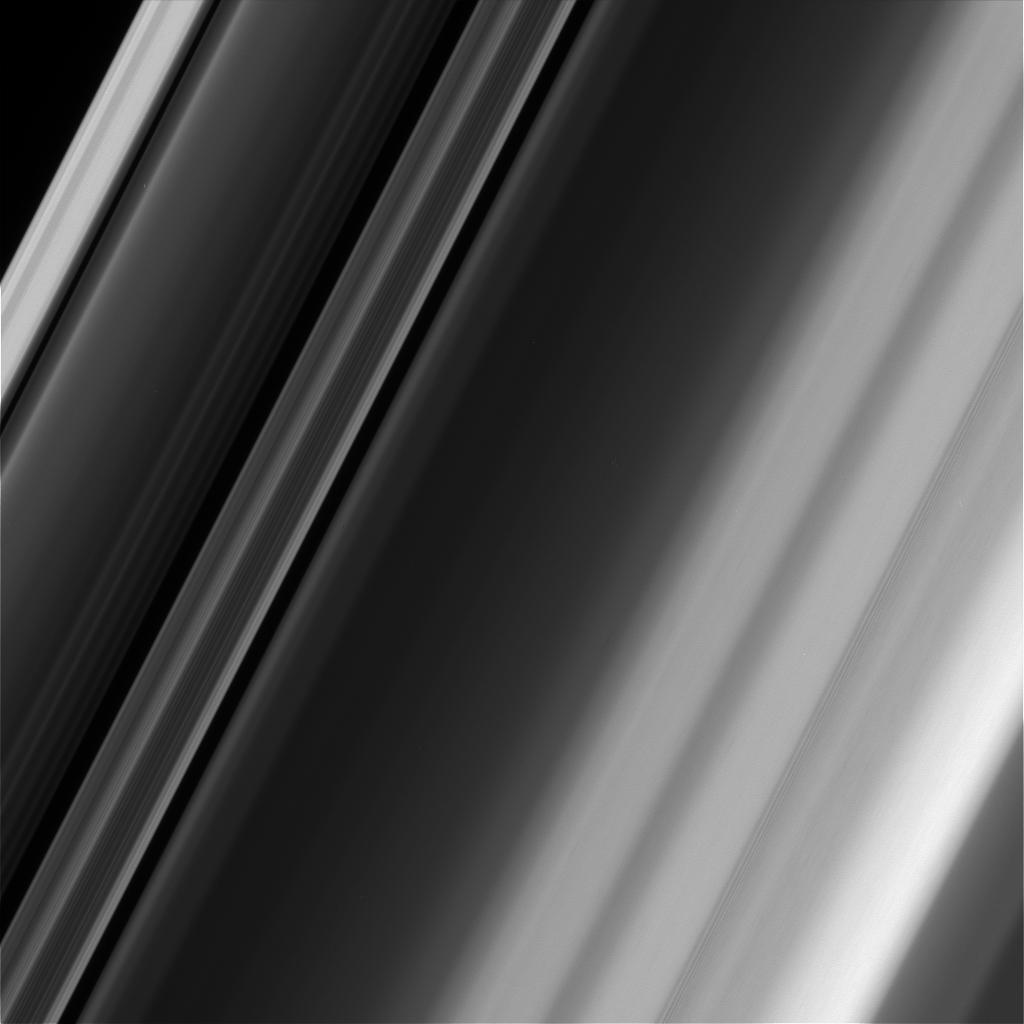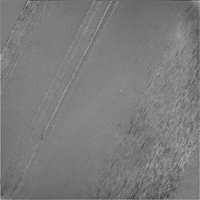
|
Texture in the Outer Cassini Division
- Click the image above for a larger view
- Full-Res JPEG (1024 x 1024) (52.2 kB)
- Full-Res TIFF (1024 x 1024) (961.2 kB)
Caption:

Figure 1
Click on image for larger version
This image of Saturn's rings, along with the supplemental version in Figure 1, illustrates how textures in the rings can differ, even in close proximity. To create Figure 1, the image was filtered a process of averaging and then subtracting the major brightness variations across the scene, to show more local structures and textures. In Figure 1, feathery texture is apparent in the "triple hump" region of the Cassini Division toward the right side of the image (so named for its three brightness peaks) but not surrounding regions.
The image was taken at a distance of approximately 70,000 miles (113,000 kilometers) from the rings and at a phase angle of 52 degrees. Image scale is 2,300 feet (690 meters) per pixel.
Background Info:
The Cassini mission is a cooperative project of NASA, ESA (the European Space Agency) and the Italian Space Agency. The Jet Propulsion Laboratory, a division of Caltech in Pasadena, manages the mission for NASA's Science Mission Directorate in Washington. The Cassini orbiter and its two onboard cameras were designed, developed and assembled at JPL. The imaging operations center is based at the Space Science Institute in Boulder, Colorado.
For more information about the Cassini-Huygens mission visit https://solarsystem.nasa.gov/cassini . The Cassini imaging team homepage is at http://ciclops.org .
Cataloging Keywords:
| Name | Value | Additional Values |
|---|---|---|
| Target | Saturn | Cassini Division, Saturn Rings |
| System | Saturn | |
| Target Type | Planet | Gap, Ring |
| Mission | Cassini-Huygens | |
| Instrument Host | Cassini Orbiter | |
| Host Type | Orbiter | |
| Instrument | Imaging Science Subsystem (ISS) | |
| Detector | ||
| Extra Keywords | Grayscale | |
| Acquisition Date | ||
| Release Date | 2019-06-13 | |
| Date in Caption | ||
| Image Credit | NASA/JPL-Caltech/Space Science Institute | |
| Source | photojournal.jpl.nasa.gov/catalog/PIA23171 | |
| Identifier | PIA23171 | |
